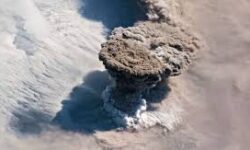Revolutionary Camera Captures NASA’s Most Powerful Rocket in Amazing Detail
NASA’s Path-breaking Camera Covers Propulsion Data in High Definition
NASA’s Path-breaking Camera Covers Propulsion Data in High Definition Detail
NASA’s Space –
Originally incepted as a part of an Early- Career -Initiative -(ECI ) from the NASA Space Technology Mission Directorate, the HiDyRS-X was -the -brainchild- of Howard Conyers, who obtained approval after a preliminary design review. After the initial proof of concept, the HiDyRS-X project was given the go-ahead to create its first prototype once it gained status in the NASA’s Game Changing Development Program.
The real deal with digital cameras
Digital cameras that were launched earlier faced the problem of dynamic range shooting, in comparison with cameras using film, thus making
The first digital cameras, although couldn’t compete with other cameras in this aspect, they still faced the issue of highlighting picture details when separate parts are lighted differently. For example, anyone using a smartphone camera faces problems with clicking an indoor picture near a brightly illuminated window; the picture turns out either completely washed out or steeped in darkness. NASA’s revolutionary new camera.
NASA’s revolutionary new camera
The HiDyRS-X project by NASA has produced one of the most advanced camera to ever be developed, to combat the above problem. The fact that it can shoot video images that are high definition, 3-D and slow-motion, employing the use of dynamic range between the brightest lights and darkest darks—means a path-breaking new development for NASA cameras. HiDyRS-X records multiple- slow-motion -video -exposures in one go and creates a composite image by layering all the results together.
Initial testing of the HiDyRS-X
The camera was tested early in 2016 as a part of
The camera has been specifically designed for rocket science and is being counted upon by scientists to give specific details about propulsion. It will help them analyze data about what occurs within the plume and gauge the performance of rocket components during ignition stress.
Delightful detail captured in HiDyRS-X images
The lead developer’s expressed The images captured by the HiDyRS-X have delighted everyone in the project by exceeding expectations. Images received from NASA show excruciating detail of the intense burn at the rocket’s end, during the propulsion test. In stark contrast to the usual shaft of super-bright nothingness captured by regular digital cameras, the HiDyRS-X captured beautiful details of the flames.
The lead developer’s expressed amazement at the details of the -ground- support -mirror- bracket -tumbling- and- the shedding vortices in the plume which gave the entire team interesting data from the footages. Already emboldened by the first prototype, the team of engineers behind the HiDyRS-X is engaged in creating a second, more progressive version.
Initial hiccups to testing
The team of developers headed by Conyers initially faced problems while converting small-scale tests into QM-2. They had to anticipate the brightness of the SLS propulsion plume—which would be several times brighter in magnitude, compared to earlier plumes. Additionally, the transport and assembling of the equipment to the remote Utah site met its fair share of issues. Since the booster test in Stennis could not be stopped or restarted once ignited, the team had to make ample use of this opportunity to test the HiDyRS-X.
While several NASA teams
Although the project faced several bottlenecks, the team emerged victorious with solid proof of the success of their camera prototype. This will allow them sufficient data to work on a better prototype to better analyze unprecedented data from propulsion. Two major lessons learned by the team include—a. switching on the camera a full 10 seconds before ignition and b. securing electronics hardware from damage or disconnection.
In the words of Conyer, “Failure- during -testing- of- the- camera -is- the -opportunity -to- get -smarter.-Without -failure, -technology- and -innovation -is- not -possible .” With time, the HiDyRS-X project will pave new avenues for rocket science and might prove to be a technological leap in towards better data monitoring.



